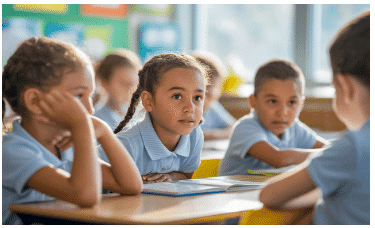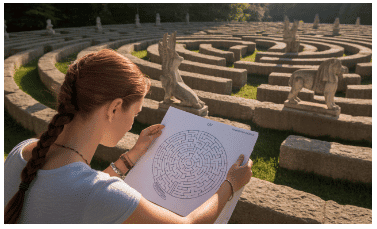Social, Cognitive, and Neurological Factors in Learning Chapter Notes | AP Psychology - Grade 11 PDF Download
Introduction
Learning extends beyond classical and operant conditioning, involving social, cognitive, and neurological processes. Social learning theory highlights learning through observation, while insight learning and latent learning demonstrate cognitive contributions to problem-solving and knowledge acquisition. These concepts, supported by experiments from Bandura, Köhler, and Tolman, reveal how individuals learn from others, sudden realizations, and passive exploration, shaping behaviors without direct experience or immediate rewards.
Vicarious Conditioning
Vicarious conditioning occurs when individuals adjust their behavior after observing the rewards or punishments others receive, allowing learning through others’ experiences.
Key Mechanisms:

- Reward Observation: Seeing a behavior rewarded increases the likelihood of imitating it.
- For example, a student may participate more in class after seeing a peer praised for answering questions.
- Punishment Observation: Witnessing a behavior punished discourages imitation.
- For example, a child avoids drawing on walls after seeing a sibling scolded for it.
- Subtle Cues: Social signals like approval or disapproval shape behavior.
- For example, A teenager may tell more jokes after noticing friends’ laughter and engagement.
Effectiveness Factors
The likelihood of copying a behavior depends on the model’s characteristics:
- High Status: Influential or successful individuals are more likely to be imitated.
- Similarity: People, especially children, are more likely to copy those similar or related to them, like siblings.
- Authority: Teachers, coaches, or experts are seen as credible models.
- Cultural Alignment: Behaviors aligned with cultural norms are more readily adopted.
Insight Learning Without Associations
Insight learning involves sudden realizations of solutions without gradual trial-and-error. Wolfgang Köhler’s chimpanzee experiments demonstrated this, where chimps solved problems (e.g., reaching a banana) by thinking and combining tools, like stacking boxes.
Process:
- Encountering a problem.
- Period of reflection or confusion.
- Sudden realization of a solution.
- Successful application of the solution.
Once learned, solutions are often transferable. For example, a child who figures out how to open a jar may apply the same technique to similar containers, highlighting the role of cognitive problem-solving.
Latent Learning and Cognitive Maps

- Latent Learning:
- Learning occurs without immediate demonstration until a motive arises.
- Challenges the idea that learning requires rewards or practice.
- Tolman’s Rat Maze Experiments:
- Rats explored mazes without rewards but learned the layout.
- When food was introduced, they quickly navigated to it, showing prior learning.
- Cognitive Maps:
- Mental representations of spatial layouts.
- Assist in navigation by recognizing landmarks, paths, and shortcuts.
- Functions:
- Finding efficient routes to destinations.
- Recognizing familiar places and landmarks.
- Adapting to changes (e.g., new routes if a path is blocked).
- Example: Student navigates a new school without a map after a few days, using a mental picture built passively.
|
35 docs
|
FAQs on Social, Cognitive, and Neurological Factors in Learning Chapter Notes - AP Psychology - Grade 11
| 1. What is Social Learning Theory and who proposed it? |  |
| 2. How does vicarious conditioning work in Social Learning Theory? |  |
| 3. What role do cognitive factors play in learning according to Social Learning Theory? |  |
| 4. Can you provide an example of Social Learning Theory in everyday life? |  |
| 5. How can understanding Social Learning Theory be applied in educational settings? |  |















